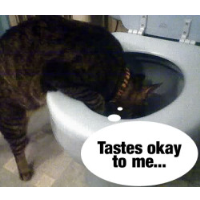Desperate Cambria Whipsawed by Changing Water Fortunes

Pushed to the brink by three years of drought, the coastal city of Cambria ratcheted up development of a hotly-contested emergency water treatment plant utilizing effluent and prepared to turn it on―just as the rains arrived.
The $9 million toilet-to-tap project, as some critics refer to it, was supposed to go online December 22, but the Cambria Community Services District cited paperwork and the posting of a bond for the delay. While those final details are attended to, the aquifer and wells that Cambria relies on are refilling.
The city, south of Big Sur, has levied surcharges, banned outdoor irrigation and taken other desperate conservation measures as the groundwater level steadily dropped. People are trucking in water. Rick Hawley, a founder of the preservation group Greenspace, described a town where a quarter of the trees are gone and half of those left standing are brown.
The battle over what to do brought to fever pitch a debate in Cambria that has flared tempers for decades as California stumbles from one dry spell to another. Conservation has already reduced consumption 40%. But critics say the treatment plan is not the answer. They argue it will disrupt the delicate ecosystem and hasn’t been properly vetted by regulators because of its emergency status.
Cambria’s water usage has been central to a larger debate about the size and character of the tourist-heavy town. Unlike other communities, Cambria does not have pipeline connections to reservoirs or the state water system. That limits development in a desirable area where developers would like to be busier.
The drought was causing undeniable hardship and threatened catastrophic consequences when the water district approved an emergency permit in May for a water project that would satisfy a third of the city’s water needs.
Water would be drawn from beneath a wastewater treatment plant, where treated wastewater mixes with seawater and fresh groundwater. That brackish confection is then filtered at a plant using reverse osmosis and pumped into the aquifer where it mixes, presumably, with cleaner water.
Toilet-to-tap has bad word of mouth. When Los Angeles tried to make use of its sewage resources in 2001, the plant it built stayed open just long enough for “indirect potable reuse” to be replaced by the more colorful effluent reference.
“Go tell somebody in North Hollywood that they have to drink toilet water but the mayor [Richard Riordan] won't have to drink it in [his] Brentwood [home],” the Los Angeles Times reported City Councilman and mayoral candidate Joel Wachs said. Wachs, like a lot of other politicians, turned out to be on the wrong side of public opinion when, despite reversing himself, his 1995 vote to approve the project helped derail his campaign.
San Diego had a similar experience around the same time, but last year launched its “Pure Water Program” to recycle impure water. Orange County has been doing it since 2008. And, as it turns out, although L.A.’s northern suburban voters went nuts over a water treatment project at a sewage plant in their midst, L.A. was, and is, recycling water from its giant Hyperion plant by the airport and pumping it into aquifers supplying other cities.
–Ken Broder
To Learn More:
A Thirsty Town Debates Need for New Source of Water (by Randol White, KQED)
Cambria Emergency Water Project behind Schedule (Cal Coast News)
Cambria CSD Postpones Revisiting Landscaping Water Decision (by Kathe Tanner, San Luis Obispo Tribune)
From Toilet to Tap: Getting a Taste for Drinking Recycled Waste Water (by Kieron Monks, CNN)
- Top Stories
- Controversies
- Where is the Money Going?
- California and the Nation
- Appointments and Resignations
- Unusual News
- Latest News
- California Forbids U.S. Immigration Agents from Pretending to be Police
- California Lawmakers Urged to Strip “Self-Dealing” Tax Board of Its Duties
- Big Oil’s Grip on California
- Santa Cruz Police See Homeland Security Betrayal in Use of Gang Roundup as Cover for Immigration Raid
- Oil Companies Face Deadline to Stop Polluting California Groundwater





